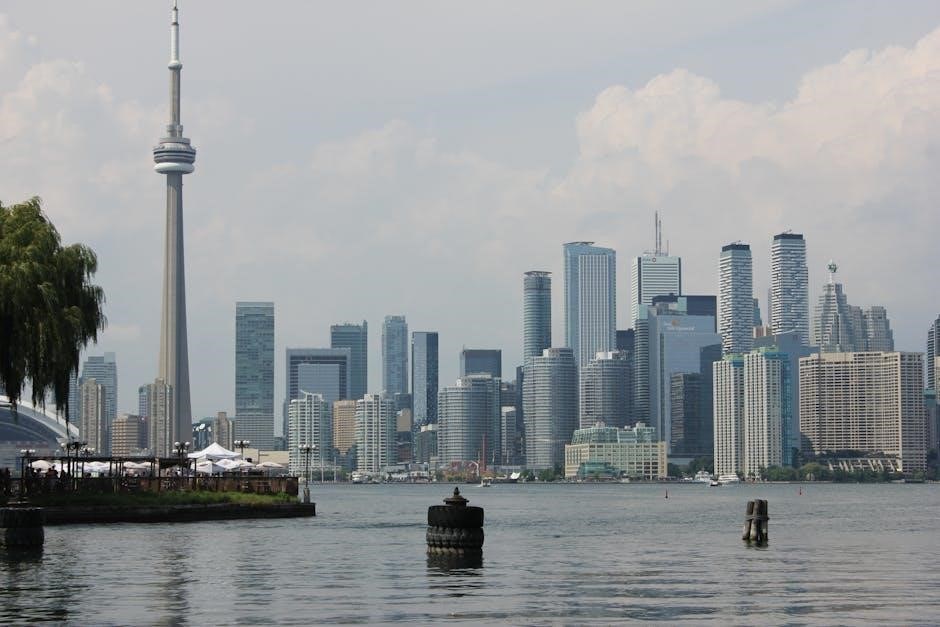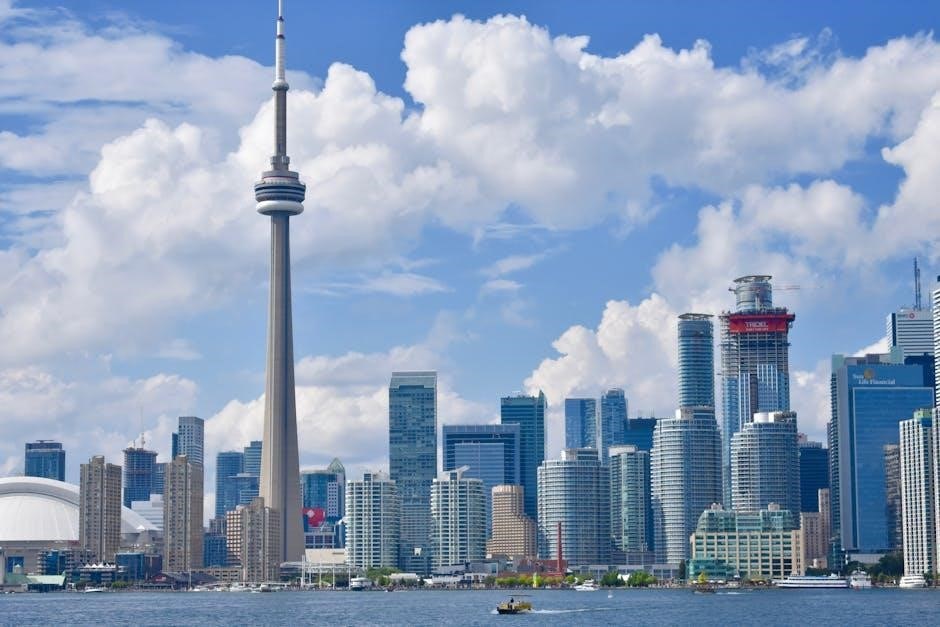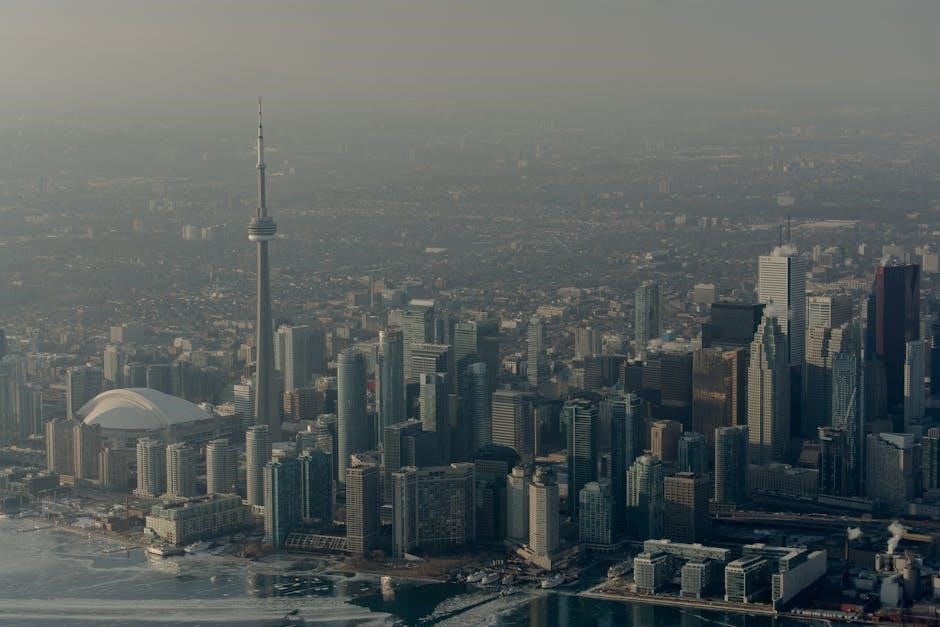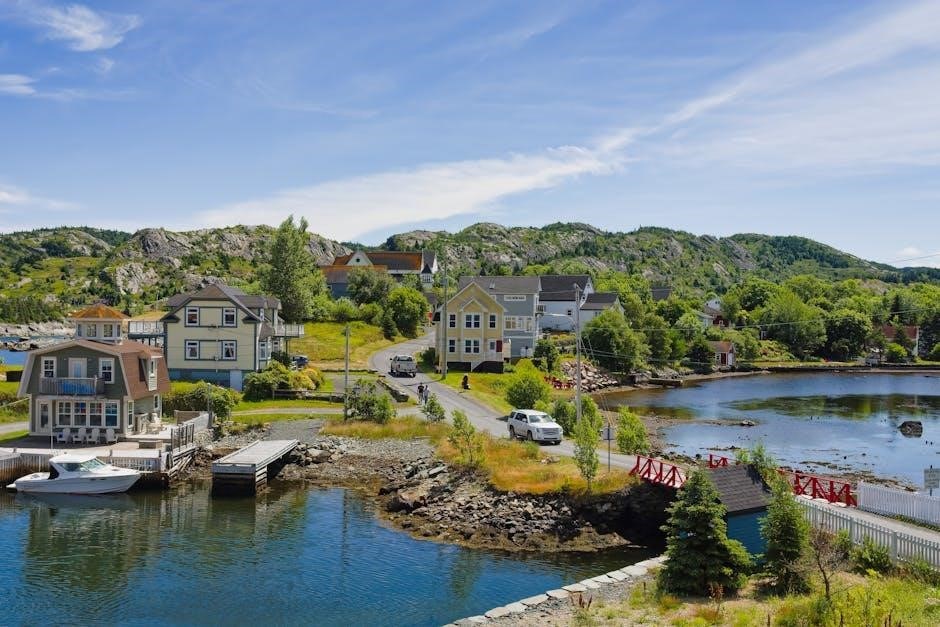Canada is divided into 10 provinces and 3 territories, each with unique cultural and geographical features. Knowing their capitals enhances understanding of its administrative and cultural landscape.
Overview of Canada’s Administrative Divisions
Canada is administratively divided into 10 provinces and 3 territories, each with distinct geographical and cultural identities. Provinces hold more autonomy, while territories are governed federally. This division reflects historical, linguistic, and regional diversity. The provinces are Alberta, British Columbia, Manitoba, New Brunswick, Newfoundland and Labrador, Nova Scotia, Ontario, Prince Edward Island, Quebec, and Saskatchewan. The territories include Northwest Territories, Nunavut, and Yukon. These divisions play a crucial role in shaping Canada’s governance, economy, and social fabric, ensuring a balanced representation of its vast and varied regions.
Importance of Knowing Provinces and Capitals
Understanding Canada’s provinces and their capitals is essential for grasping its political structure and cultural diversity. This knowledge aids in navigation, education, and engaging with regional history. It also enhances awareness of local governance and economic contributions, fostering national unity and informed citizenship. Knowing these details is particularly useful for students, travelers, and professionals, providing a foundational understanding of Canada’s administrative framework and its significance in daily life and global interactions.

List of Canada’s 10 Provinces and Their Capitals
Canada comprises 10 provinces, each with distinct capitals, offering insights into its diverse regions and governance through accessible resources like PDF guides and educational maps.
Alberta ― Edmonton
Alberta, known as “Wild Rose Country,” is a western Canadian province renowned for its vast landscapes and rich natural resources. Its capital, Edmonton, is a cultural and economic hub, hosting festivals like the Edmonton Folk Music Festival. The province is famous for its oil sands and stunning natural beauty, including the Rocky Mountains. Edmonton serves as the political and administrative center, while also offering vibrant arts and entertainment scenes. Alberta’s diverse economy and picturesque landscapes make it a significant part of Canada’s identity, attracting both residents and visitors alike.
British Columbia ー Victoria
British Columbia, often called “Beautiful British Columbia,” is Canada’s westernmost province, celebrated for its stunning natural beauty. Its capital, Victoria, is located on Vancouver Island and is known for its historic charm, gardens, and mild climate. The province is famous for its rugged mountains, dense forests, and coastal landscapes, attracting outdoor enthusiasts. Victoria, while smaller than Vancouver, serves as the administrative and cultural heart, offering a blend of history and modern amenities. British Columbia’s economy thrives on tourism, agriculture, and technology, making it a vital contributor to Canada’s diverse identity and natural heritage.
Manitoba ー Winnipeg

Manitoba, often referred to as the “Heart of Canada,” is a prairie province located in the center of the country. Its capital, Winnipeg, is a vibrant city known for its rich cultural heritage and historical significance. Winnipeg is home to iconic landmarks like The Forks and the Canadian Museum for Human Rights, attracting visitors from across the globe. Manitoba is renowned for its vast agricultural lands, producing significant amounts of wheat and canola. The province also boasts stunning natural landscapes, including Lake Winnipeg and the boreal forests. With a diverse economy and a blend of Indigenous and European influences, Manitoba plays a vital role in Canada’s history and identity.
New Brunswick ー Fredericton
New Brunswick, one of Canada’s original provinces, is a land of stunning natural beauty and rich history. Its capital, Fredericton, is a charming city situated along the Saint John River. Known as the “City of Stately Trees,” Fredericton boasts a blend of colonial architecture, vibrant arts scenes, and outdoor recreational opportunities. The province is famous for its forests, rivers, and coastlines, making it a popular destination for nature enthusiasts. New Brunswick’s economy thrives on industries such as forestry, mining, and agriculture. Fredericton, as the capital, serves as the political and cultural heart of the province, offering a mix of history, education, and modern charm;
Newfoundland and Labrador ー St. John’s
Newfoundland and Labrador, Canada’s easternmost province, is renowned for its breathtaking coastline and vibrant culture. Its capital, St. John’s, is a colorful city known for its brightly painted row houses and lively arts scene. The province is celebrated for its rugged natural beauty, including the iconic Iceberg Alley and the stunning Gros Morne National Park. St. John’s, as the capital, is a hub of history, culture, and adventure, offering attractions like Signal Hill and the vibrant waterfront. The province’s unique identity, shaped by its maritime history and friendly locals, makes it a standout destination in Canada. Its charm and beauty captivate visitors year-round.

Nova Scotia ー Halifax
Nova Scotia, one of Canada’s maritime provinces, is a treasure trove of natural beauty and rich history. Situated on the eastern coast, it is known for its stunning coastline, scenic drives, and picturesque landscapes. Halifax, the capital, is a vibrant city that serves as the economic and cultural hub of the province. The city boasts a blend of modern amenities and historical charm, with landmarks like the Halifax Harbourfront and the Canadian Museum of Immigration at Pier 21. Nova Scotia’s friendly residents and welcoming atmosphere make it a beloved destination for both locals and visitors. The province’s unique identity, shaped by its maritime heritage, continues to captivate everyone who explores it.
Ontario ー Toronto

Ontario, Canada’s most populous province, is a hub of economic and cultural activity. Its capital, Toronto, is a global city renowned for its diversity and vibrant atmosphere. As the financial heart of Canada, Toronto hosts major institutions like the Toronto Stock Exchange. The province is also home to iconic landmarks such as the CN Tower and Niagara Falls. Ontario’s vast size and varied landscapes, from the Great Lakes to the boreal forests, make it a region of immense natural beauty. Its rich history and modern advancements create a unique blend that defines its identity. Toronto’s multiculturalism and Ontario’s economic prowess make them central to Canada’s development and global influence.
Prince Edward Island ー Charlottetown
Prince Edward Island (PEI) is Canada’s smallest province, known for its stunning natural beauty and rich history. Charlottetown, its capital, is a charming city with a strong maritime influence. PEI is famous for its red sand beaches, scenic landscapes, and the Confederation Bridge, which connects it to mainland Canada. Charlottetown played a pivotal role in Canadian history as the site of the Charlottetown Conference in 1864, which laid the groundwork for Canadian Confederation. The province is also celebrated for its vibrant arts scene, picturesque villages, and a deep connection to the sea. Its unique character makes it a beloved destination in Canada.
Quebec ― Quebec City

Quebec, Canada’s largest province, is a predominantly French-speaking region rich in history and culture. Its capital, Quebec City, is one of the oldest cities in North America, founded in 1608. The city’s historic district, a UNESCO World Heritage Site, features cobblestone streets, fortified walls, and iconic landmarks like Chateau Frontenac. Quebec City is known for its vibrant festivals, including the Quebec Winter Carnival, and its unique blend of European charm and North American influences. The province is also celebrated for its culinary traditions, natural landscapes, and contributions to Canadian history and identity, making it a cornerstone of the country’s cultural diversity.
Saskatchewan ー Regina
Saskatchewan, often called the “Breadbasket of Canada,” is a vast, agriculture-rich province in the western part of the country. Its capital, Regina, is a cultural and economic hub, known for its vibrant arts scene and historic landmarks like the Royal Saskatchewan Museum and the Saskatchewan Legislative Building. The province is famous for its rolling plains, abundant wheat fields, and numerous lakes. Regina, founded in 1882, is also home to the University of Regina and hosts various festivals celebrating its diverse heritage. Saskatchewan’s unique blend of natural beauty, agricultural significance, and rich history makes it a vital part of Canada’s identity and economy.
Canada’s Three Territories and Their Capitals
Canada has three territories: Northwest Territories, Nunavut, and Yukon. Each territory has its own capital, with Yellowknife, Iqaluit, and Whitehorse being the respective administrative centers.
Northwest Territories ― Yellowknife
The Northwest Territories (NWT) is a vast and sparsely populated region in Canada. Its capital, Yellowknife, is known for its rich history and natural beauty. Located on the shores of Great Slave Lake, Yellowknife serves as the administrative and economic hub of the NWT. The city is famous for its aurora borealis displays and its role in the region’s gold mining history. Yellowknife is also home to a diverse population, blending Indigenous cultures with modern urban life, making it a unique and vibrant place in Canada’s northern landscape.
Nunavut ー Iqaluit
Nunavut, established in 1999, is Canada’s newest and largest territory. Its capital, Iqaluit, is situated on Baffin Island and serves as the region’s administrative and cultural center. Known for its vibrant Inuit community, Iqaluit blends traditional practices with modern life. The city offers breathtaking views of the Arctic tundra and access to unique natural phenomena like the Northern Lights. Iqaluit is also a gateway to exploring Nunavut’s vast landscapes, including fjords, ice caps, and wildlife-rich areas. This remote yet resilient city plays a vital role in preserving Inuit heritage while fostering economic and social development in the Canadian Arctic.

Yukon ー Whitehorse
Yukon, one of Canada’s three territories, is renowned for its vast wilderness and rich history tied to the Klondike Gold Rush. Its capital, Whitehorse, is the territory’s largest city and a hub for outdoor enthusiasts. Located along the Yukon River, Whitehorse offers stunning natural scenery and serves as a gateway to exploring the region’s untouched landscapes. The city is also home to a vibrant arts scene and museums that celebrate the region’s history. As the administrative center, Whitehorse plays a key role in Yukon’s governance and economy, blending history with modern-day charm in the heart of Canada’s north.

